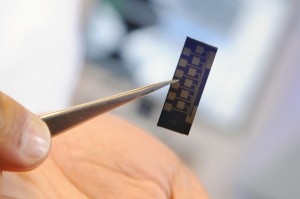Hybrid Electronics: Low-Resistance Connections Could Facilitate Use of Multi-walled Carbon Nanotubes for Electronic Interconnects
Using a new method for precisely controlling the deposition of carbon, researchers have demonstrated a technique for connecting multi-walled carbon nanotubes to the metallic pads of integrated circuits without the high interface resistance produced by traditional fabrication techniques.
Based on electron beam-induced deposition (EBID), the work is believed to be the first to connect multiple shells of a multi-walled carbon nanotube to metal terminals on a semiconducting substrate, which is relevant to integrated circuit fabrication. Using this three-dimensional fabrication technique, researchers at the Georgia Institute of Technology developed graphitic nanojoints on both ends of the multi-walled carbon nanotubes, which yielded a 10-fold decrease in resistivity in its connection to metal junctions.
The technique could facilitate the integration of carbon nanotubes as interconnects in next-generation integrated circuits that use both silicon and carbon components. The research was supported by the Semiconductor Research Corporation, and in its early stages, by the National Science Foundation. The work was reported online October 4, 2012, by the journal IEEE Transactions on Nanotechnology.
“For the first time, we have established connections to multiple shells of carbon nanotubes with a technique that is amenable to integration with conventional integrated circuit microfabrication processes,” said Andrei Fedorov, a professor in the George W. Woodruff School of Mechanical Engineering at Georgia Tech. “Connecting to multiple shells allows us to dramatically reduce the resistance and move to the next level of device performance.”




